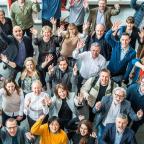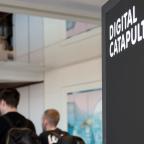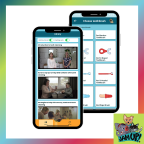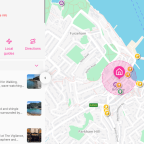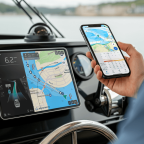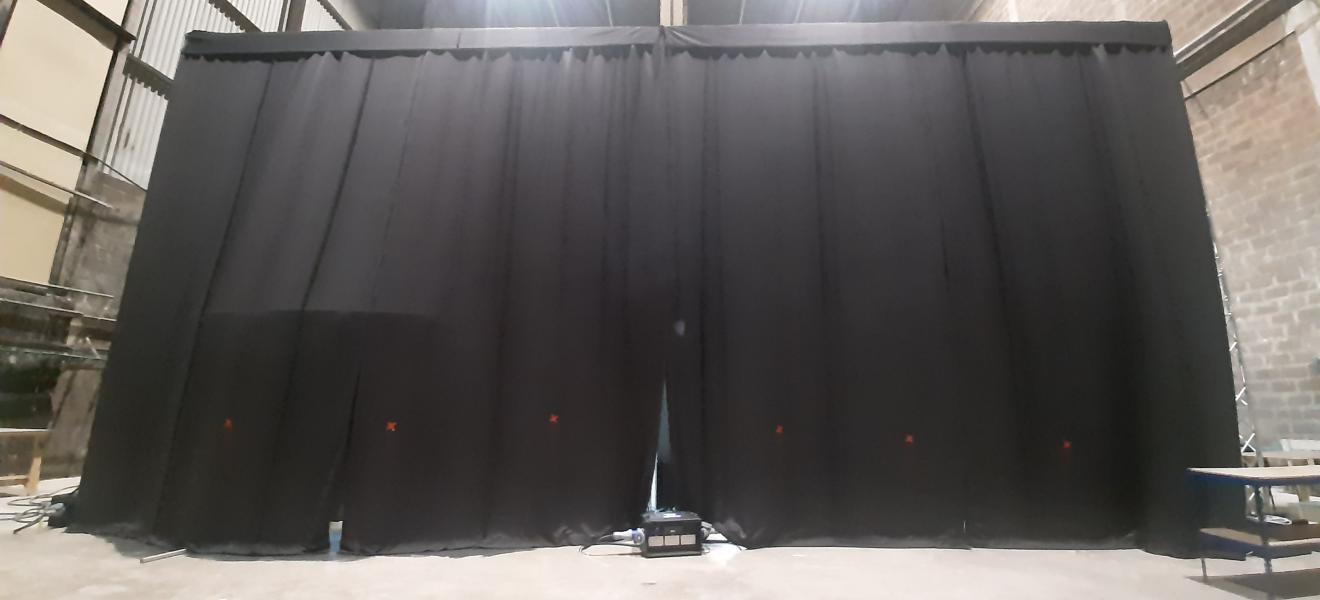
Behind the curtains at CAMERA Bristol's 'Innovation Studio'
Tucked away down a narrow track at Bristol’s Bottle Yard Film Studios, camouflaged within a row of uniform warehouses, sits CAMERA’s ‘Innovation Studio’.
CAMERA is the ‘Centre for the Analysis of Motion, Entertainment Research and Applications’, a research facility based at the University of Bath that examines the impact and employment of motion capture technology in areas such as health, biomechanics and sport performance.
I am greeted by Eva Martino, CAMERA’s Creative Studio Producer, who escorts me through a series of dusty rooms leading to the studio’s workshop. Soon, we reach CAMERA’s studio. The workshop, it turns out, is more than just an intricate selection of cameras and wires. It is an immense, dark structure that would not look out of place in a Christoper Nolan movie. It dominates the room in which it stands: a set of long black curtains that hang to conceal the state-of-the-art technology that lies behind them.
“The primary funding came from the ESIF [European Structural and Investment Funds], but more specifically the ERDF [European Regional Development Fund,” Eva says, explaining how CAMERA managed to fund such an extensive setup]. “Thanks to that funding, we managed to get a lease on this space for at least 3 years, with the idea that we would support up to 100 companies, spread between creative and health SMEs.”
The ESIF are the EU’s main funding programmes for projects that ‘contribute to job creation and a sustainable and healthy European economy,’ according to the European Commission. The ERDF is one of five funds that falls under the umbrella of ESIF, focusing specifically on funding for SMEs, local and regional digital connectivity and environmental projects.
Eva’s words echo throughout the vacant space surrounding us. She explains how CAMERA’s Innovation Studio “offers 12 hours of free technical support to both businesses and sole traders, either on-site, or even by way of equipment that can be lent to them. Our goal is to assist 65 creatives through use of the studio, and 30 companies or sole traders associated with the health sector.”
Within this great edifice, an assortment of floodlights illuminates the central stage where applicants who have sought out CAMERA’s support perform. Standing inside such a structure, I feels like I am being made privy to some sort of classified technology. Of course, the equipment is anything but: The resources offered by CAMERA are there for everyone, to accelerate business possibilities for creatively-minded companies.
In one corner of the room, a curved screen presents the elastane-adorned participant as a digitally-realised avatar. In the opposing corner is a smaller screen that shows the suit’s data being fed back to CAMERA’s computers, and next to this, a long force plate.
Pooya Soltani, CAMERA’s Studio Engineer, appears from one of the two trailers that house the computers used to monitor everything that happens on stage. Noticing my fascination with the force plate, Pooya explains that it can be used for ‘gait analysis’, which could have implications for areas such as orthopedics or sports performance:
“The force plate measures the ground reaction force, or the amount of force that the ground applies on you. This means that a runner, for example, can use it to try and improve their technique, either to improve their speed or even reduce the amount of injuries that they might receive.” Clearly, motion capture technology goes far beyond just gaming and films and has the potential to accelerate change across a wide range of industries.
“CAMERA currently assists with about 37 projects in the creative sector,” Eva says. “But one thing we found out very quickly when starting up was that the South West has a lot of sole traders, so we requested a change to the funding so that we could accommodate them as well. This has allowed us to take applications from the likes of artists and theatre makers. For example, right now we have a sculptor who decided to experiment with 3D digital sculpturing. The free 12-hour session with us has allowed him to test out any ideas he might have had previously but didn’t have the opportunity to assess practically. This is one of the other important aspects about this facility. We do not just take applications from businesses with an idea already in place. Some, that are looking for funding, can come and use the space to prove a concept to a larger business so that they can continue their work with the investment they secure as a result of using the studio’.
It is evident, from speaking to Eva and Pooya, that CAMERA do not wish for any business or sole trader to think that their studio is exclusive in any way. It is in their interest, as much as it is in the interest of those using the studio, to be able to bring in concepts and ideas that come from a vast number of different areas, and to use motion capture to advance as many of these areas as possible.
One of those making use of the studio is Andrew, an established actor in Bristol looking to update his showreel with some motion capture footage.
“This session won’t be part of the 12 hours officially afforded Andrew by our ESIF funding, but instead an opportunity to evaluate exactly what he wants to do, so that we can make the most of the 12-hour session,” explains Martin Campbell, CAMERA’s Head of Studio in Bristol. “Once we’ve done a few more test sessions, we won’t need them every time, but he’s very kindly offered to come down and help us out.” Once again, as with Eva and Pooya, Martin highlights the two-way nature of the sessions. They are there to encourage long-term collaboration and exploration that will endorse the work of both CAMERA and the client.
Soon, Andrew arrives, complete with his own set of stilts, the likes of which have seen plenty of high-profile action in recent simian-led blockbuster film trilogies. He enters elated, eager to explore what the studio has to offer, immediately questioning the CAMERA team about resolution possibilities and potential gait measurement using the force plates. However, with little time left after the necessary preamble – donning the suit and then attaching each motion sensor one-by-one – they are ready to go. Adam has two scenes in mind, one of which sees him acting as a bartender in what I imagine to be a dirty town in the Old West. Perhaps my elevated imagination has taken over, but it is hard to curb such visions when faced with boundless possibilities that are achievable through the medium of motion capture.
I stand quietly as the scene unfolds, with my attention being divided between Adam and his character presented on the screen behind him. For all the details of CAMERA’s work granted to me by Martin, Eva and Pooya, these few moments of realised potential demonstrate exactly what is so important about the work being done by the CAMERA team.


